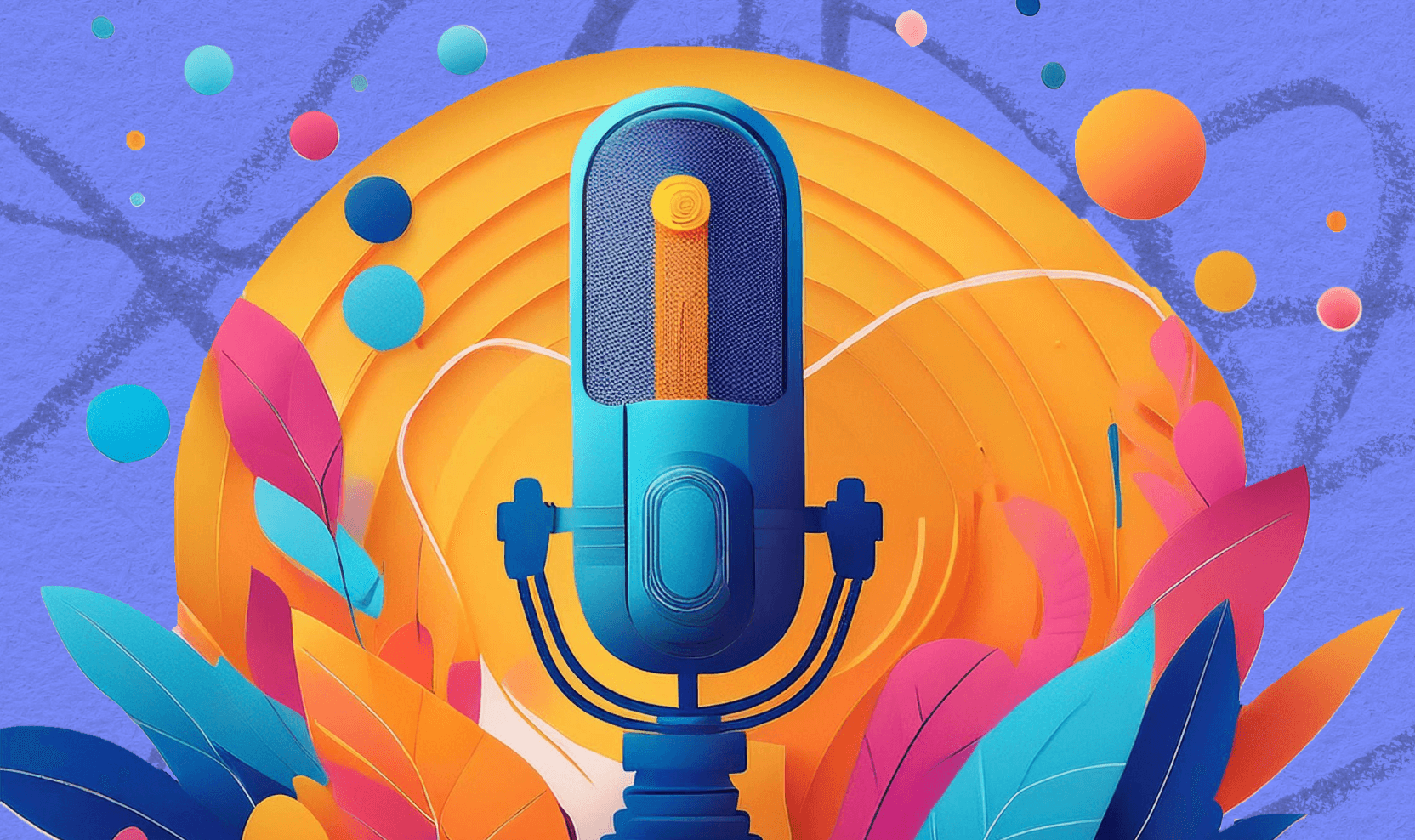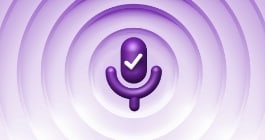Unlock more with the Adobe Podcast Premium plan 
- Video support for MP4, MOV, and more
- Bulk upload files for enhancement
- Adjust strength for a more natural sound
- Enhance up to 4 hours a day, files up to 1 GB
- No download limits on Studio projects
- Download original recordings, speaker-separated
- Customize audiograms and captions with themes
- Upload custom backgrounds for audiograms
- All Premium features for design
Enhance Speech
Studio
Design with Adobe Express Premium
The role of sound design in podcasting
Crafting an immersive audio experience: The power of sound design in podcasting.

Last updated: April 8, 2025
Author: Nick Epson, Voice-first product marketer
Long before the podcast format came to be, early radio shows and sports casts amused the public with their old-timey voices, wacky sound effects, and the magic of the era’s technology. Believe it or not, this is where the concept of sound design in media first took root.
Like the tech we used to communicate and tell stories, sound design has changed since the Golden Age of Radio. Throughout the following, we’ll explain sound design and breakdown its various elements while providing some guidance along the way.
What is sound design in podcasting?
Today, many forms of media rely on sound design to deliver a specific tone, create a mood, and maintain listener engagement. It’s also a crucial element for branding, which is important for those who are dedicated to achieving growth and monetization.
Sound design requires bringing a variety of different components together while ensuring that each piece is as high quality as possible. More specifically, great sound design means optimizing voice clarity, integrating well-balanced sound effects (where appropriate), applying environmental sounds, and creating engaging transitions.
Of course, each podcast is unique, so some elements will be heavier for some podcasters or may go unused entirely.
Regardless of a podcast’s style, the goal is to use audio elements to deliver the best possible storytelling experience for your listeners.
The importance of high-quality audio
Bad audio is more than just annoying; it can ruin a good show concept. Audio that’s crisp and clear tells an audience a couple of different things:
- You’re a professional and take podcasting seriously (even if your schtick is being silly)
- Good quality throughout a recording reduces distractions that can, among other things, break immersion
But don’t just take our word on it; we were able to sit down with Dallas Taylor of Twenty Thousand Hertz. Here’s what he had to say about audio:
Quality is a form of respect for the audience. And editing? That’s the ultimate respect for their time.
When audio is high quality, it becomes transparent. You don’t notice it because you’re immersed in the nuance. The tone, the articulation, the subtle shifts in expression. Every voice is a performance, and great audio captures that.
High-quality audio democratizes voices. It takes someone with a brilliant idea and places them on a stage where their message is crystal clear and respected. Great audio gives gravitas. When we can clearly hear someone, we lean in, we listen, and we understand.
Spending a little more time or energy on cleaning up your audio can go a long way with your audience. But it doesn’t stop there; good sound design relies on each piece sounding as clean as possible, so make sure the sounds and other elements you choose align with the overall tone of your podcast. Be sure to check out Music offered in Studio from Adobe Podcast to easily add these elements when you edit.
Tips for creating great sound design in your podcast
For many aspiring podcast hosts, speaking is the easy part. However, they often lack familiarity with technical aspects like editing during post-production.
Fortunately, we have a few bits of advice that should help smooth out the learning curve.
Layering music, sound effects & working with pauses
Finished media products, whether graphics, video, or audio are typically composed of several layers.
Fortunately, if you’re sticking to a purely audio format for your podcast, you won’t need to worry about the various labors necessary to make video work. Instead, you’ll need to learn how to:
- Add background music that flows with your program without overpowering other sounds or audio
- Integrate sound effects (where appropriate) and adjust volumes to maintain overall balance to bring your works to life
- Leverage well-timed pauses to assist with pacing, provide time for reflection or can help build tension
With Adobe Podcast, we’ve made some of this a bit easier with our text-based editing tool baked right into the Studio—rather than manipulate waves in a timeline, you’re able to make adjustments using transcripts generated when you record in Studio or manually upload your recording files.
Background music, sound effects, and the dialogue you capture all work together to deliver a positive listening experience. Music can help sustain the mood and smooth out transitions, and sound effects can help shape environments and “texture” scenes, thus aiding in storytelling.
It’s important to review your content from an outside perspective as if you’re a listener with no memory of your recording. Of course, this is easier said than done, which is why getting opinions from family, friends, or colleagues is helpful. Feedback can provide clues or direct criticism that, when taken in stride, will help you improve your podcast.
Polish content until you can see your reflection
Polishing your content can help you improve how listeners receive your content and brand in all but niche scenarios. But what does polishing mean?
Aside from assembling all the “pieces” we discussed to help deliver a quality podcast, some things you should also do include:
- Ensure voices and dialogue are easy to understand. Arguably, one of the most important elements to clean up is your dialogue audio—our Enhance Speech in Adobe Podcast does just this, whether you record directly on the platform or upload files yourself.
- Balance everything. It’s frustrating for listeners to feel like they need to adjust volumes around quiet dialogue or overpowering effects, so make sure everything is adjusted accordingly before publishing your content.
- Use consistent sounds throughout your productions. If you’re intent on building a brand, familiarity will be your friend. Find sounds or music you like and be sure to use them in consistent ways that make sense for your show.
- Quality is king. If you want to make a stylistic choice to have lower quality at certain parts, that’s absolutely an option for you. For example, This American Life strives to preserve environment noise, which helps to emphasize the recording's environment or setting. Just make sure you’re not sloppy with it: abrupt changes in quality, especially when something is perceived as “worse,” can be jarring for listeners.
Adobe Podcast can help with the heavy lifting
Good sound design helps listeners engage with podcasts and other kinds of media, but it takes planning and work to do right.
Like anything else, sound design should be well-planned and looked over a few times until you’re confident the quality of your program is up to snuff.
To make things a little easier, Adobe Podcast offers several helpful features like Studio for powerful recording and text-based editing from the web. And, our Enhance Speech tool can help save time by automatically cleaning audio, so give it a try today.
About the author: Nick brings 15+ years of experience across product development and content marketing, especially in the telecom and VoIP space. He’s passionate about clear messaging, crisp audio, the impact of voice, and building tech that actually connects.



